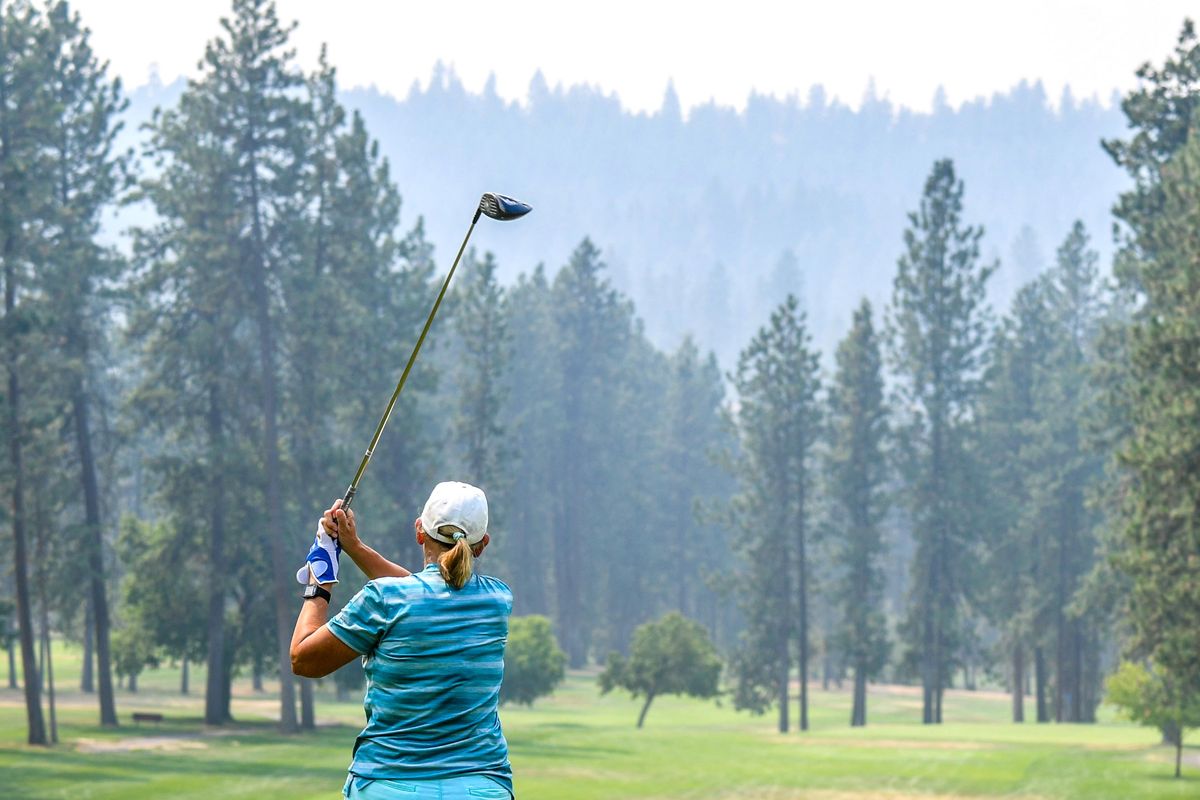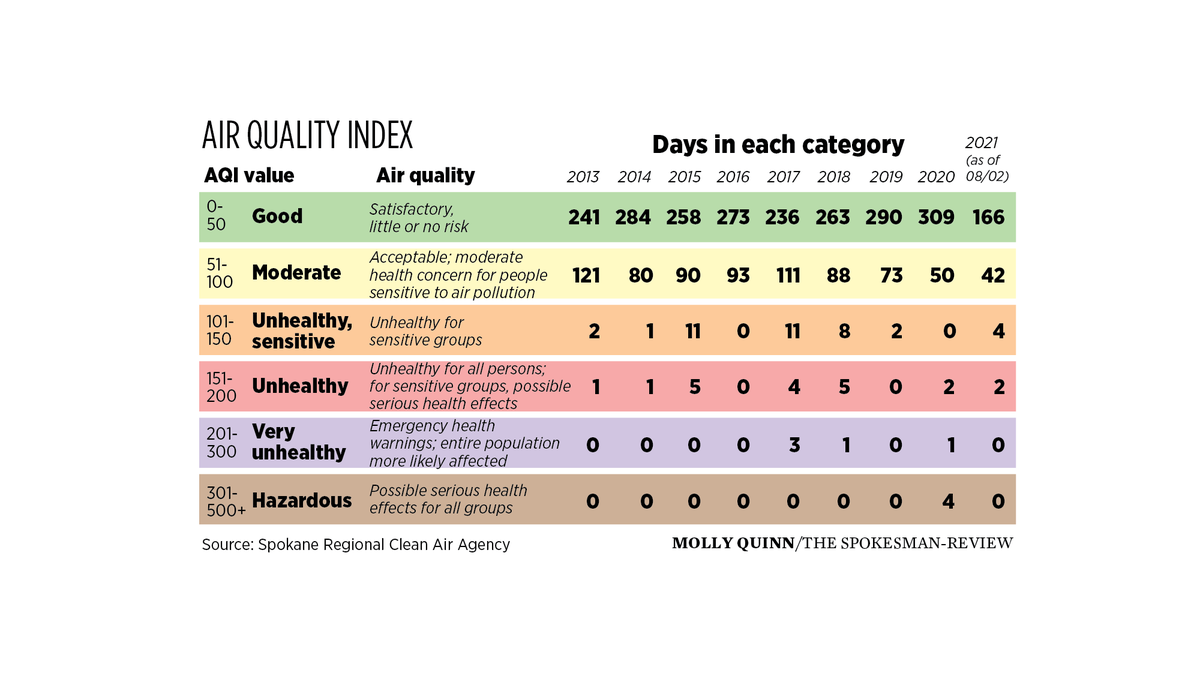Air Quality Index, explained: What it means when Spokane’s air is rated ‘unhealthy’
Carol Lampard, of Newman Lake, launches her ball from the 10th tee at Downriver Golf Course and into the wildfire smoke Tuesday. Lampard said the smoke was much worse in Newman Lake. (DAN PELLE/THE SPOKESMAN-REVIEW)Buy a print of this photo
By late Tuesday morning, the quality of Spokane’s air sat in the unhealthy range of the U.S. Air Quality Index due to wildfires across the Northwest.
The 184 rating was consistent with ratings the city’s air earned this past weekend, as well as a National Weather Service air quality alert in place for Eastern Washington through noon Thursday, at least. The index, which employs a zero to 500 scale, describes any rating within 151-200 as “unhealthy.”
The Air Quality Index is “designed to be a guide to make the best choice for yourself and your family in terms of your outdoor activity based on air quality,” said Lisa Woodard, a spokeswoman for the Spokane Regional Clean Air Agency.
“We think people should take air quality very seriously. There are plenty of studies that link poor air quality with health outcomes,” Woodard said. “Now, should people panic? If people plan ahead and they know where to get the information and follow what’s suggested, they will have more assurances that they are taking care of their health.”
Used by the Environmental Protection Agency, the Air Quality Index ranks the severity of air pollution caused by different pollutants. That includes wildfire smoke, a form of particle pollution.
The EPA categorizes particle pollution into two types: Fine particles, such as those found in wildfire smoke, have diameters less than 2.5 micrometers; and coarse particles, which have diameters between 2.5 to 10 micrometers.
Each index rating comes with recommended actions for potentially affected individuals and groups.
Air quality ratings between 51-100, for instance, largely concern people who may be unusually sensitive to air pollution. The EPA recommends these individuals consider reducing prolonged or heavy exertion while watching for symptoms, such as coughing, dizziness or shortness of breath.
Ratings between 101-150, meanwhile, also concern what the index refers to as “sensitive groups,” including people with heart or lung disease, asthmatic individuals, older adults, children and teenagers.
“People often assume that if they are young and healthy, than they will not be as affected by exposure to wildfire smoke, but that is not true,” Kelli Hawkins, a spokeswoman for the Spokane Regional Health District, said via email. “Wildfire smoke is harmful to everyone. Children and adolescents are at increased risk for severe respiratory problems from wildfire smoke, especially when active.”
Air quality ratings that exceed 151 pertain to everyone, with the aforementioned sensitive groups advised to take greater care to protect their health.
The 151-200 range calls for everyone to reduce prolonged or heavy exertion and to take more breaks during outdoor activities. Sensitive groups are advised to avoid such activities.
The 201-300 range is indicative of “very unhealthy” air quality, according to the index. In this case, the EPA recommends sensitive groups avoid all physical activity outdoors, while everyone else is advised to avoid prolonged or heavy exertion and to consider moving activities indoors.
Last September, government and health officials warned people to stay indoors when air quality levels neared 500. Quality ratings between 301-500 fall within “hazardous” levels, according to the index.
“As long as wildfire smoke is in the air, we encourage people to limit outdoor activities, as wildfire smoke is dangerous to everyone,” Hawkins said. “However, if the Air Quality Index reached the hazardous levels, 301+, we would warn people to stay inside as much as possible, to work from home if possible, and to take other precautions to limit time spent outside.”
While the COVID-19 pandemic has required masks as protective measures, the Spokane Regional Health District does not typically recommend wearing masks to prevent wildfire smoke exposure.
Cloth masks do not provide much protection from breathing in wildfire smoke, according to the health district.
In the past, the health district has recommended N95 masks or other respirators certified by the National Institute for Occupational Safety and Health, or NIOSH, for fine particulates to people who needed to wear a face mask outside during a fire event.
“N95 respirators are not an option for everyone,” the health district’s guidance reads, “as they are not recommended for children, not as effective with facial hair, and those with pre-existing conditions should first consult with a health care provider.”
Additional guidance and precautionary measures are available at the health district’s website, srhd.org, or through the Spokane Regional Clean Air Agency’s website, spokanecleanair.org. The sooner people can take such precautions, the better, Woodard said.
“When the smoke hits, like we’ve had this week, you may venture out to your local supercenter and find that the supplies aren’t there; maybe they’re out of the box fans or the filters,” she said. “Any time you can prepare in advance is a good thing.”

